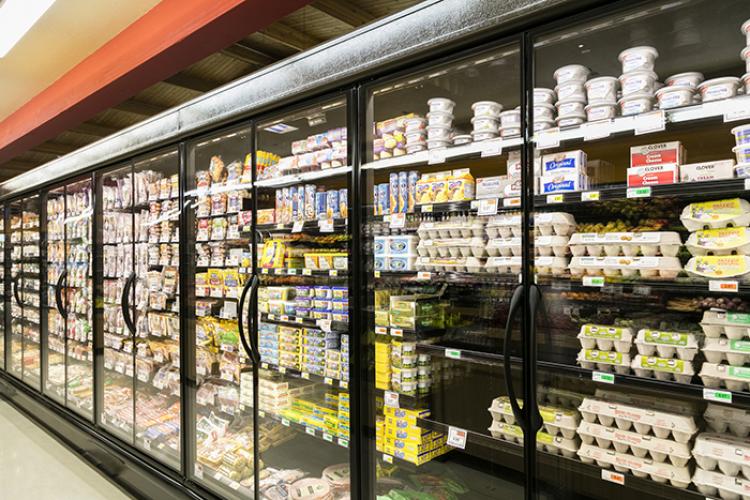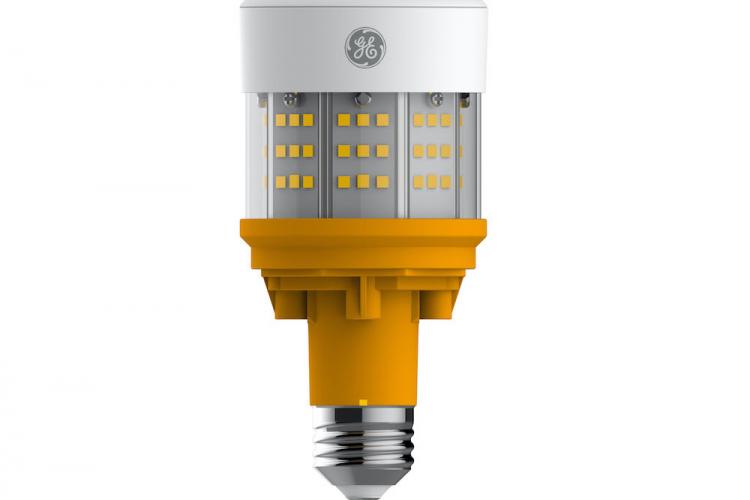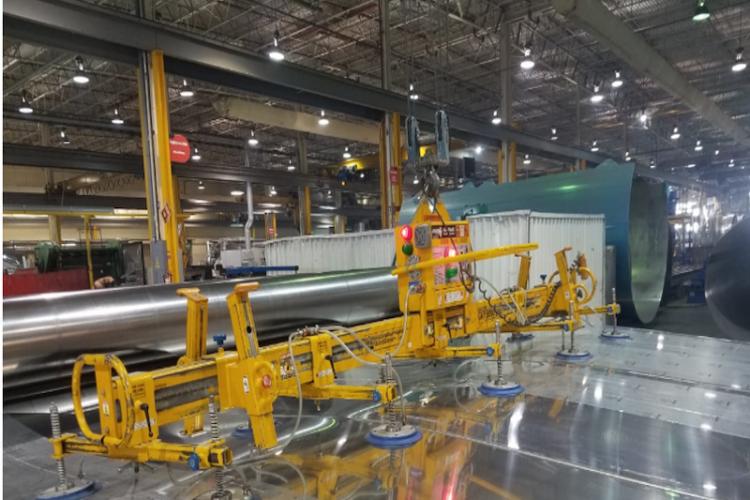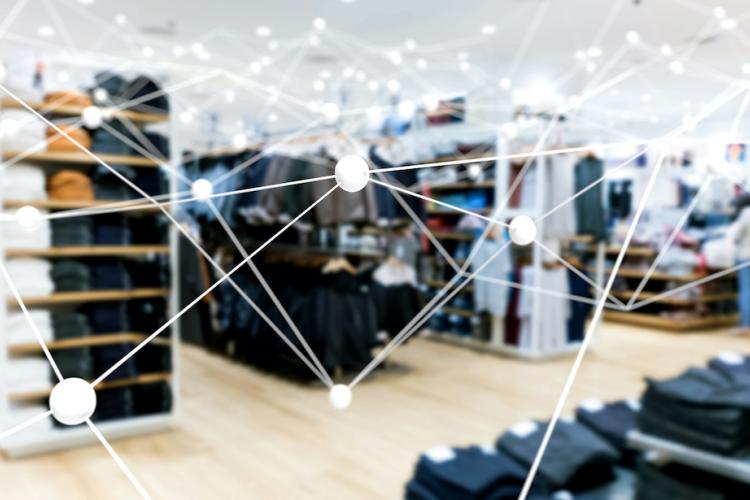A Chat with Charles: Making a Case for Energy Savings in the Refrigerated Aisle
A Chat with Charles: Making a Case for Energy Savings in the Refrigerated Aisle
A Chat with Charles: Making a Case for Energy Savings in the Refrigerated Aisle
Charles R. Zimmerman recently retired as the Vice President of Design and Construction for the International Division of Walmart Stores, Inc., and is now owner of Global VE, a consulting firm focused on worldwide value engineering and capital efficiency. Retailers who want to reduce energy intensity in their stores can learn from Mr. Zimmerman’s many experiences spearheading sustainable building initiatives since 1989.
This month, Charles chats with Current about changing refrigerated and freezer aisles and how technologies like LED lighting—and increasingly, smart IoT devices—are creating new savings for supermarkets and new experiences for shoppers.
Current: Refrigerated and frozen food aisles can account for a large portion of a retailer’s energy spend. What can store owners do right now to reduce costs?
Charles: Historically, frozen foods like pizza, ice cream and vegetables have been located behind doors in cases while meats, cheeses and dairy have not. If you look around other developed markets, the U.S. is a late adopter of the trend to put all refrigeration behind doors. I’ve been fortunate in my career to travel the globe and visit high-end stores and discount outlets and everything in between, and I’ve seen many retailers add doors to refrigerated cases. The truth is, shoppers are used to opening doors for half of these products, and when doors get expanded to other aisles they typically don’t notice. What they notice is that they aren’t freezing anymore, and now they’re more likely to spend more time in that aisle as well.
As the result of putting doors on vertical cases, we saw energy spending reduced substantially—up to 70 percent—and the math is simple because you’re not losing all that cold air from the case all day any longer. It’s a trend I hope to see continue among retailers moving forward; I would say a door is not the barrier to sales some imagine it to be.
You’ve talked about being a pioneer in the use of LED lighting in freezer doors, having retrofit thousands of cases in thousands of stores over the years. Why LED?
We’re now talking about 13 years since LED was first incorporated in doors, and within four or five years it was the industry standard. When we first started to test LED, I remember thinking about how cool it would be to visit a small mom-and-pop store and see LEDs in those cases, too, and we guessed it would be 10 years or more, but it happened in about half that time. Now, I can’t recall the last time I saw a new refrigerated case that didn’t have LED. It’s mindboggling how quickly the industry turned on a dime and adopted the technology. The energy savings, the reliability, the way it made our cases pop—it was all there, and it made the decision easy in my mind.
What’s also interesting is I believe we saw food manufacturers adapt their packaging to take advantage of the better color rendering and quality of light that LED provided. The refrigerated cases look like jewelry cases now; it makes the product look phenomenal. Certain colors just look better under the cooler temperature of LEDs, and I sensed you started to see more greens and blues in packaging to maximize the benefit of the lighting. It was a broader spectrum of color than what we got from fluorescents, and for the first time, food makers were able to take advantage of that to appeal to shoppers.
Not a lot of people know this, but LEDs perform much better than fluorescent lamps at lower temperatures. LEDs love the cold, so they’re a natural fit in cases.
A lot has been said about the benefits of LED lighting since it first became a viable option in stores and other buildings. In your experience, has the technology lived up to the hype?
I would say it’s exceeded my wildest imagination, especially in terms of reliability. When we first started to retrofit our cases, part of my pitch to the finance team was to say: look, we go in every two years and replace these fluorescent lamps, but with LED we’ll never replace these lights again—and that’s exactly what we saw happen.
I have to eat my words a bit here, because eventually we did go back to finance and say: you know what, we do want to replace these lights. They said, you said they’d last the life of the case! And we explained, there’s nothing wrong with them, they still look great, but the technology has gotten much more efficient.
While we didn’t have a problem, we could replace our lights with the newest generation of product and still get a tremendous payback. So now we were upgrading LED with LED, even though it’s still performing perfectly well, and it was harder not to believe in the technology at that point.
There’s a wave of Internet of Things (IoT) devices on the horizon that promises to impact energy management for all industries. Can food retailers take advantage of sensors and data to transform their stores, or is the freezer aisle still a leap too far?
I think the industry is right at the peak of embracing IoT technologies, and I know at least a few major chains in the U.S. that are deploying solutions as rapidly as they can. If your HVAC system goes down, for example, the store gets uncomfortable and maybe you lose some sales because customers don’t want to stay as long; but when your refrigeration goes down not only are you losing sales, you’re throwing away product too.
It can be shocking how much product must be thrown away because of a minor variation in case temperature. Until recently, unless that case is out of temp or completely shut down, we typically didn’t know we even had a problem brewing. Now there are technologies that can tell us well in advance when a case is starting to perform erratically—even though it’s not out of spec and still holding temperature, maybe weeks or months ahead of a critical failure—so maintenance can be dispatched and that issue can be taken care of long before that critical situation occurs.
There will be other applications too. From an efficiency standpoint, it’s making sure you’re not overcooling products, that you’re right at the exact temperature you need to be. There are also food-compliance applications—where measurements that were taken manually can now be captured by adding a few sensors to the equipment—and these are very accurate at determining not only the temperature of the case, but what the temperature of the product inside the case is.
The big payback, the reason people are deploying this so quickly, is they basically see one their biggest shrink items in their P&L statement disappear. I think even before we get doors on refrigerated cases, you’re to going to see a lot of these IoT-type solutions installed to properly monitor and manage the performance of cases. It’s going to occur much faster because the payback is so quick.
While cold storage aisles have changed for retailers focused on savings, are shoppers experiencing stores differently than before?
In my opinion, it’s the impact of grocery pickup and delivery that will be the biggest adjustment for customers. That’s to say, the same supermarket the shopper is in is the same one where product is now being picked and delivered to a holding area, so it’s that experience of a customer and an employee being in the same aisle at the same time, selecting the same product.
It’s going to be interesting to watch because there must be a tipping point. Right now, it’s had a limited impact, and the customer is going to put up with that inconvenience; but as more people shop for their groceries online that’s going to be the big change, and I’m sure there are many retailers who are talking about that right now.
Even in small rural stores, there’s going to be customer complaints about getting up and down the aisles with all these associates pulling totes around and picking products and taking them to the back. The first time an employee swoops in and picks the same watermelon a shopper had their eye on—that’s a real scenario where suddenly someone is upset, and stores will have to learn to manage expectations in new ways.
What’s the biggest lesson you’ve learned when it comes to managing energy needs in refrigerated and freezer cases? What advice do you have for others in your position?
I remember a story I heard many years ago, right around when stores were first rolling out LED lighting. A store was experimenting with occupancy sensors on the sides of vertical freezer cases so that when no one was standing in front of them, the lights would go off. Of course, with LED, you can virtually flash those lights a million times a day if you want to and it does nothing to degrade the lamp. So they were extending the life of LEDs—which already had a ridiculous rating—saving on energy, and reducing the heat load.
It wasn’t until much later that an executive happened to be walking down an aisle early one morning and all the cases were dark, because there weren’t many shoppers in the store at the time, but the impression was that the aisle didn’t look inviting enough. And just like that, the store was told to decommission all of those occupancy sensors.
In my opinion, where they got greedy is turning the lights completely off. If they had just dimmed them to 50 percent, they would have had half as much savings, but no one would have noticed looking down the aisle that the cases were dark. I’ve used that example many times when talking to people about any type of advanced control technology. Don’t get greedy; don’t turn the lights all the way off. Rather, experiment with how far you can take them down before anyone perceives the difference.
Lately I’ve been talking to customers about zone dimming with sales floor lighting, and how a shopper or store manager won’t notice if you take them down by 15 percent. LED gives you the ability to incrementally do anything you want. There are numerous intervals between “on” and “off” we can play with—that you should be playing with—and right now practically nobody is.
Any final thoughts for our readers this month about the transformation of the freezer aisle and curbing energy use?
As I mentioned, I got to look around the world at what people were doing, and in Europe especially, doors on cases happened very quickly and it was because of energy codes. Having that opportunity to see the best of what’s out there and bring those ideas back to the companies I worked for was invaluable. Maybe you don’t have a big travel budget, but you can still take time to look closely at what’s best in class, what the trendsetters are doing, and incorporate that into your company’s portfolio. Many food retailers still underestimate the energy savings potential the freezer aisle holds.
We hope you enjoyed our chat! There’s even more in store as Charles explains how smart retail stores enhance the customer experience―watch for our next insightful installment in December!
See how leading retailers are leveraging LED lighting and controls to create amazing possibilities.






